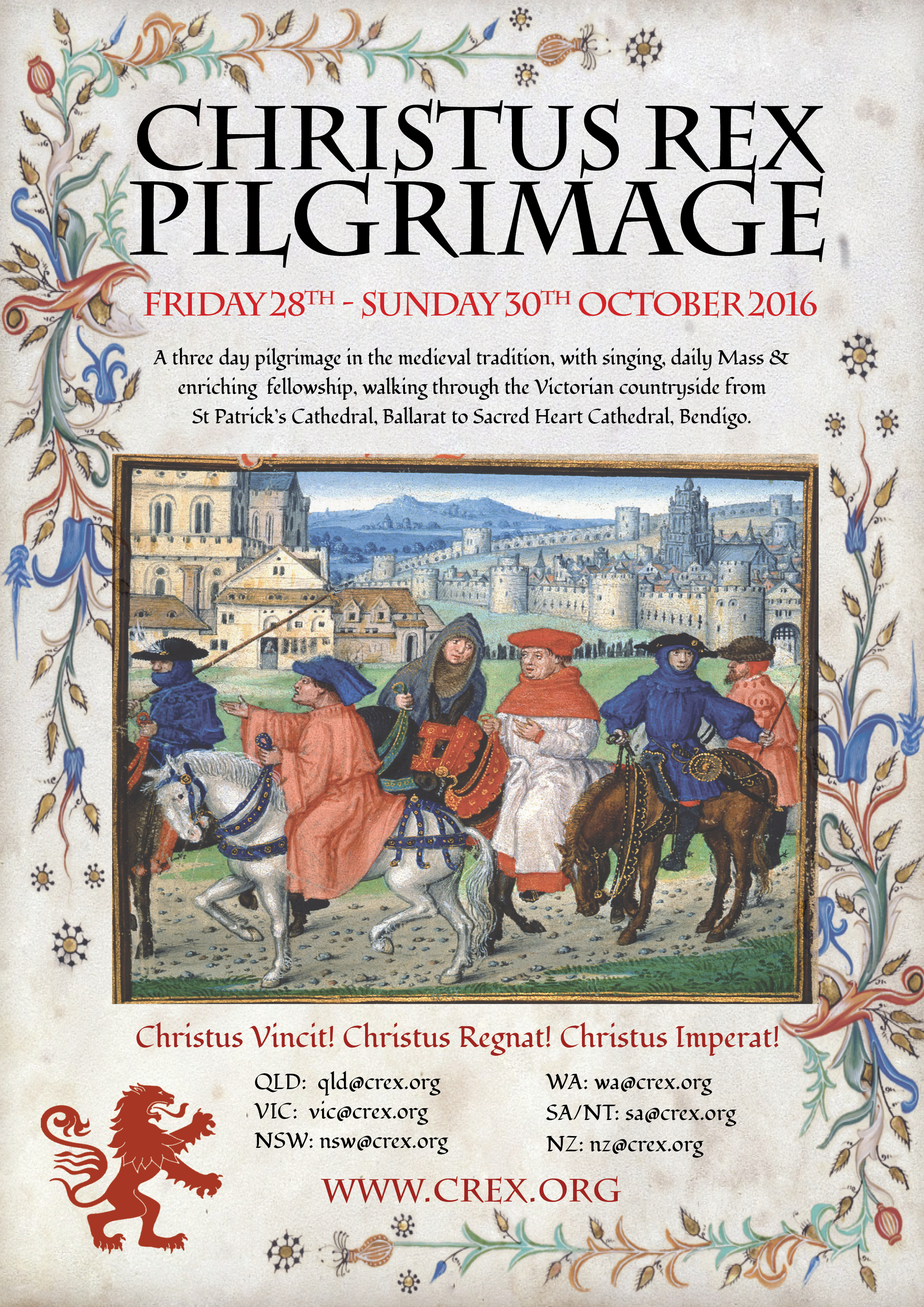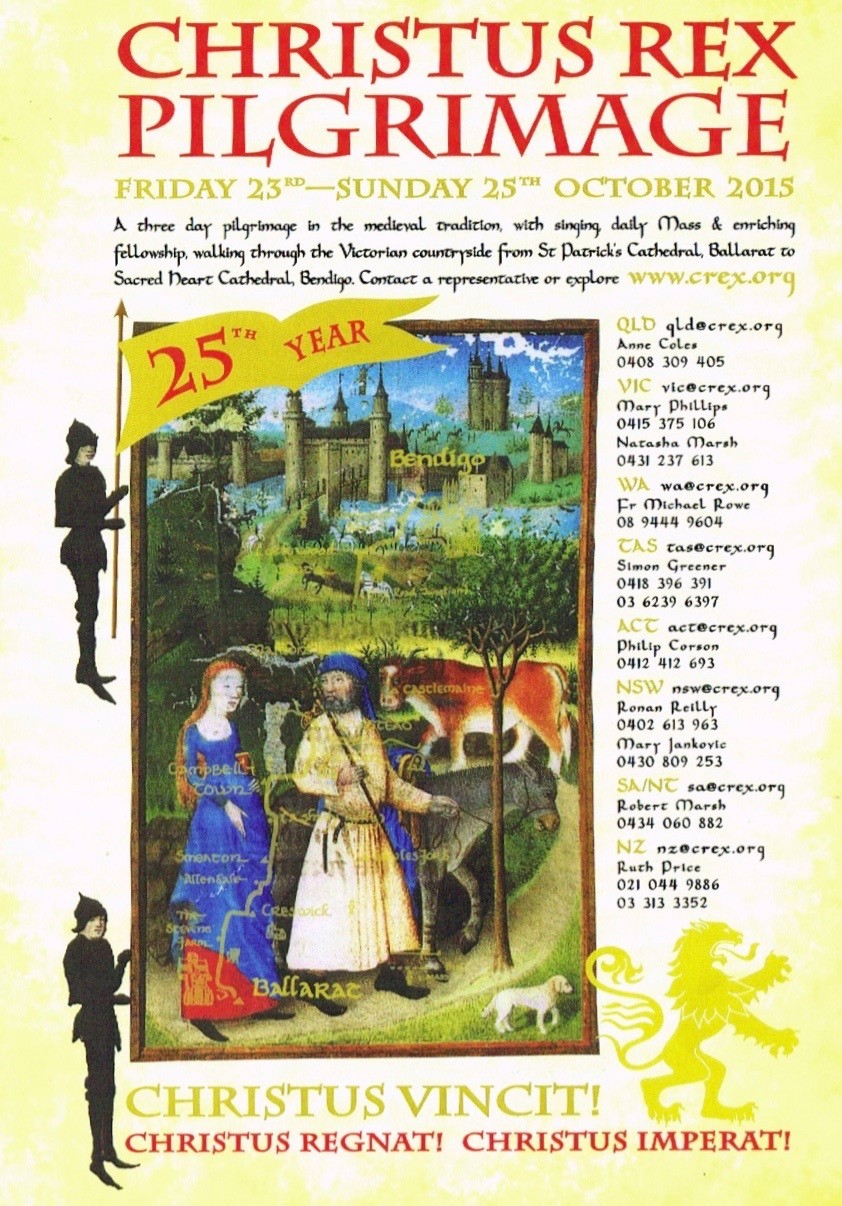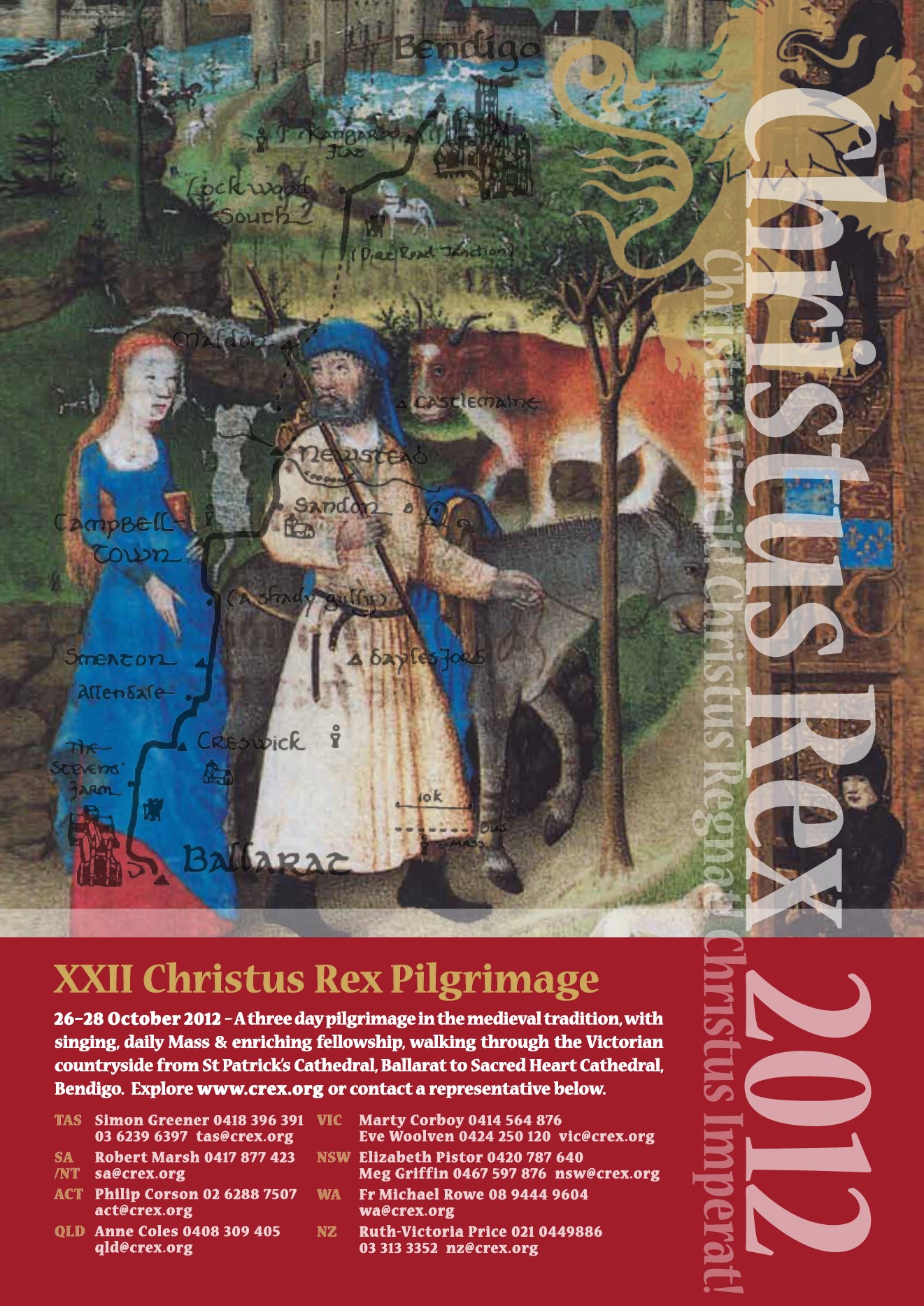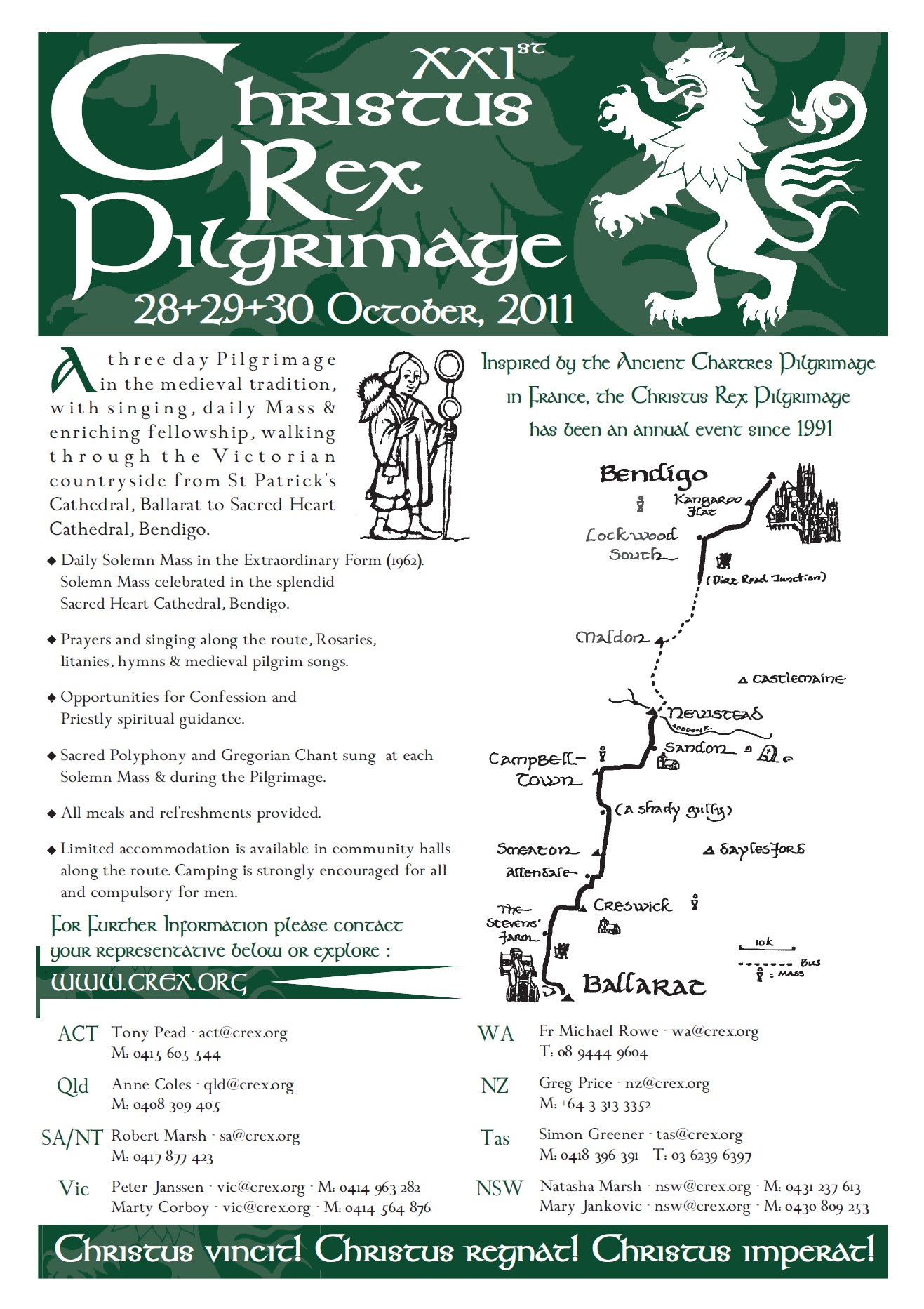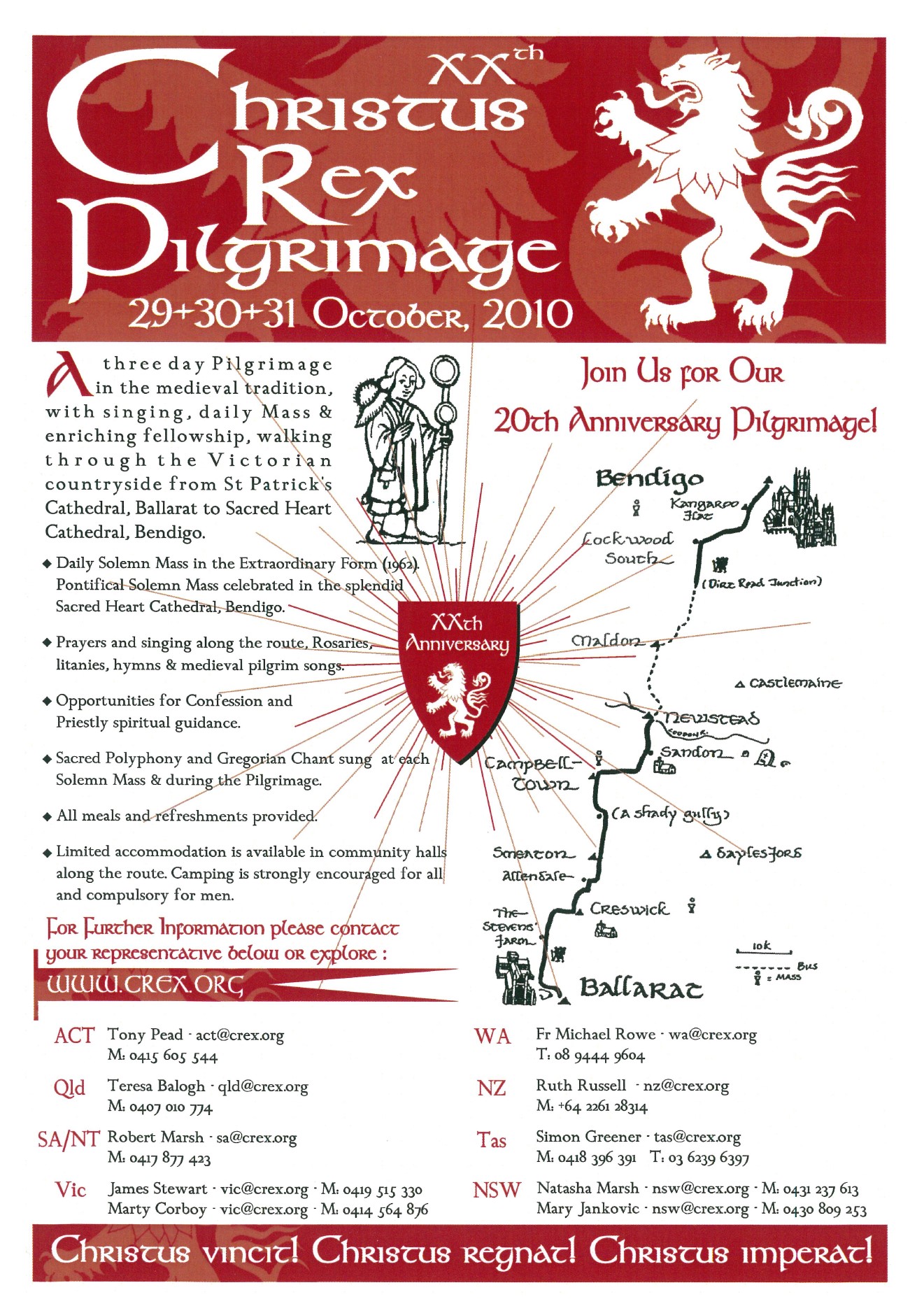
The History of the Pilgrimage
To understand the story of the Christ the King Pilgrimage, it is necessary first of all to know of the great French Paris-to-Chartres Pilgrimage, which is held annually over the Pentecost Sunday weekend. The Chartres Pilgrimage revived a French tradition in the early 1980s. It had begun with a handful of Catholics that were devoted to their traditional faith, and who saw the institution of the pilgrimage as a powerful weapon of repentance, conversion and weapon against the evils of our present age. Within a couple of decades, there were about ten thousand pilgrims, many from other countries, walking and praying the route from Notre Dame Cathedral in Paris to Notre Dame de Chartres.
Inspired by the Chartres Pilgrimage story, a small group of Australians dedicated to the traditional liturgy decided to create a Pilgrimage tradition in Australia. They were faced with the task of finding two Cathedrals in Australia about a 3-day walk apart that were aesthetically appropriate for the worthy celebration of the traditional liturgy. This was a little harder in vast, modern Australia than it was in densely-populated France which had been Christian for over one and a half millennia.
In the end, though, the choice was a simple one: the road from St Patrick’s Cathedral Ballarat through the Victorian country side to Sacred Heart Cathedral Bendigo turned out to be the sole candidate which fitted the bill on both counts. The Feast of Christ the King (always the last Sunday in October in the traditional calendar) was chosen, not just because the theme was very appropriate for a Pilgrimage aiming to convert Australia to the Catholic Faith, but because it was a mild time of the year weather-wise, and a relatively quiet time of the year liturgically, in which priests might be available. A great deal of preparatory work was put in by the founding Chairman, Bill Rimmer, in surveying the route, and negotiating with churches, shires and farmers for permission to use facilities.
In 1991, the first Pilgrimage set off – a band of about a dozen from several different states, with Canberra priest Fr John Parsons as its chaplain.
Rosaries were prayed, hymns sung, ferverinos preached and masses celebrated as they are today. But things were a little different in those early days. There were no marshals, or portaloos, and the Saturday overnight stop was Maldon, at which the Sunday Festal Mass was also celebrated early in the morning. 2nd Vespers for the Feast of Christ the King was celebrated at Sacred Heart Cathedral, Bendigo on the Sunday afternoon. The choir and the ministers and servers made up most of the turnout at each mass. And perhaps most importantly, the Saturday evening dinner was a superb roast with vegetables and gravy, supplied by our cooks, Marie and Michael Houlihan, who went on to cater generously for many subsequent Pilgrimages. (Some harbour the belief that the Saturday Night Roast might return to the Pilgrimage just before the Second Coming.)


